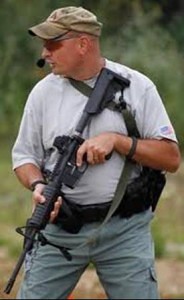By John Krupa III
As citizens rush to obtain their Illinois Concealed Carry License (CCL) many unwarily fall victim to instructors failing to properly administer the state mandated training requirements.
The Illinois State Rifle Association (ISRA) and the Illinois State Police have received numerous complaints that ISP “approved instructors” are taking shortcuts, skipping required training elements or simply signing off on CCL certifications without presenting any course material at all!
As one of the Senior State of Illinois Certified Master Firearms Instructors I feel obligated to take point addressing these issues to not only alert citizens of CCL instructor fraud, but also contribute to the education of ISP approved CCL firearms instructors state-wide.
Getting your Illinois Concealed Carry License
When people ask me “What’s the best way to find a reliable CCL instructor?” here’s the advice I give them: Take your time, do your research and don’t rush at the first open slot in a class. It’s better to find an instructor you are confident in and wait your turn to train with him / her.
When you find an instructor on the Internet that interests you, make sure that person is listed as an approved instructor on the Illinois State Police website. If they are not listed on the approved instructor list, but are offering Illinois CCL classes, then it’s a scam!
What is the instructor’s background?
Do the instructors have their credentials available for you to review on their website? If they don’t have their credentials posted on their website, ask them to provide you with a copy of their Professional Vita. If they decline to show you their Professional Vita, I’d seriously question considering them as the person you want to complete your CCL training with.
Keep in mind that the person you select to certify you for your CCL is the person that is required to retain your training records and will be one of the witnesses that will be subpoenaed to court to testify on your behalf. The selection process to secure your personal defense experts starts BEFORE you use deadly force, and begins with the person you select to certify you for your CCL!
When reviewing an instructor’s credentials, you also want to look at the instructor’s experience. Are you selecting a person that specializes in personal defense training? Can they demonstrate the length of their experience on this subject? Will that person be able to provide expert testimony in court on your behalf based on their established experience? You may want to consider avoiding inexperienced instructors with no background so you don’t end up being their crash test dummies.
Get familiar with the Illinois CCL law
Go to the ISP website and download the Illinois CCL Law PDF. It’s a lengthy document (over 160 pages) so I’m recommending students to copy it to a thumb drive and take it to their local print shop and have them print it out. Have the print shop copy it double sided on 3-hole punched paper so you can keep it in a binder. This will allow you to highlight the important issues you need to remember and make notes where needed.
Read the law and become familiar with it prior to attending your CCL certification course. Write down questions on topics you don’t understand and have them ready to ask the instructors as they cover those topics. You are not going to become intimate with this law over a 16-hour course. Ultimately, it will be up to you to know and understand the law.
Review the list of topics the Illinois CCL law requires you to learn
Go to the ISP website and download the Concealed Carry License Firearms Curriculum Approval PDF. This form outlines the curriculum elements that each instructor is required to present to their students in their classes by State law.
Print this form out and bring it with you to class and check off each element as the instructor presents them to ensure the instructor covers all of the elements you are required to learn.
Should the instructor miss any of the required elements that are listed on the Curriculum Approval form or fails to cover them in detail, make sure you ask questions about those elements until you are satisfied that you understand them.
If an instructor deliberately skips any of the elements they are required to teach or refuses to address your questions about elements they have failed to cover, then you HAVE NOT been properly trained as required by State law.
If this happens, I recommend that you immediately withdraw from the class, request that your tuition be refunded and find an instructor on the ISP website that is going to present the course materials correctly.
If you are the victim of ANY instructor transgressions described in this article, you should be aware that the Illinois State Police has investigators assigned to investigate these violations! Any ISP sustained complaints will result in that instructor’s ISP approval ID number being revoked and their name removed from the approved instructor list.
Tips for ISP Approved CCL Firearms Instructors
First and foremost, congratulations if you made the ISP approved instructors list. While many of you have worked very hard to become certified and registered to teach Illinois CCL courses, it is important to know that the bulk of the instructor transgressions that have been reported to the ISP have been committed by a very small percentage of approved instructors.
With that being said, here are some tips that can help you provide the most professional CCL training courses to your students.
Know the law and protect your students
There is A LOT of responsibility in teaching this program. As an instructor, you have to know the Illinois CCL law beyond a “working knowledge”. Instructors need to be able to understand the law at a level where they should not only be able to teach it, but also be able to explain what they presented as an expert during testimony at depositions and in a court of law.
An instructor must be able to demonstrate knowledge of the Illinois CCL law beyond the familiarization offered to students. If an instructor fails to demonstrate accurate knowledge of the law during testimony, how can the instructor testify (demonstrate) that his / her students were trained correctly?
If a student claims that they did what they were trained to do and it’s proven during depositions and / or court testimony that the instructor did not train the student correctly, the student is at fault for not understanding the law!
In turn, as soon as the student is found liable for punitive damages (or possibly criminally convicted) that student is going to file a vicarious liability lawsuit against the instructor for failure to train (i.e. improper training).
There are many cases that have influenced law enforcement training policy changes along these lines where police officers sued their agency and fellow officers for these very same reasons.
Instructors are responsible for EVERY student they certify! If one of your students is involved in a CCL related use of deadly force incident (good or bad) you can bet that the instructor that certified them is going to be subpoenaed to testify in that case.
Be thorough in your presentation and cover all CCL elements
Shortcuts are not an option, so don’t skip material or leave anything out. Present the Illinois CCL curriculum as required. Your students are relying on you to be the expert on this. Earn your students trust and give them the confidence that you have their back and they can rely on you if their case ends up in court.
So many instructors are bent on presenting their CCL programs at the minimum standards! If you read the ISP curriculum requirements, you will see that the ISP leaves the discretion up to the instructors to exceed those standards.
This means you can increase the number of training hours to include enhanced course elements; more dry-practice drills, more live-fire drills, extended lectures on combat mindset, situational awareness, conflict resolution, etc.
You don’t need to turn this into a 20 or 30 hour course, but to add another 1 or 2 hours onto your program to make sure your students have everything they need is just another way of showing how professional you are at what you do and that you care about your students safety and wellbeing.
Take pride in the program you present and your students will be proud to have trained with you!
Continue to build your instructor credentials
“As instructors, we are committed to serving our students. We serve our students by striving for excellence in training and being the best we can at what we do. We become the best by constantly training hard and seeking perfection in every task we complete. These are the traits that make us unique.”
– John Krupa III, Chicago Police Department, IALEFI Conference 2007
Whether you’re a brand new NRA Basic Pistol Instructor or you’ve been teaching for the last 20 years, you never stop training! The firearms training industry is constantly evolving and requires us to keep up with training trends and continuous maintenance of our skill-set.
Attend as many training courses as you can. Study what other instructors are doing and see how you can apply new training concepts to your Illinois CCL course. The more diverse your training background is the stronger presence you will have as a professional trainer and expert witness.
Join professional instructor associations such as the International Association of Law Enforcement Firearms Instructors (IALEFI) and the International Law Enforcement Educators & Trainers Association (ILEETA). Attend annual training conferences and network with your fellow instructors.
In the end, your instructor skills will only be as good as you allow them to be. Don’t let yourself fall into a comfort zone where you start thinking “I know everything I need to know about shooting and teaching”. So many instructors fall into this pit and many never make it out.
Where is the Illinois CCL program headed?
Ultimately, the Illinois CCL program will only be as good as we want it to be. If we allow incompetent instructors to breed incompetent CCL students the potential exists to generate negative case law that could result in stricter CCL restrictions or rescinding the Illinois CCL law altogether.
We have an obligation and responsibility to work together to protect this right that we have worked so hard to establish in Illinois. Let’s train smart, train safe and carry responsibly.
As always – stay safe.
About John Krupa III
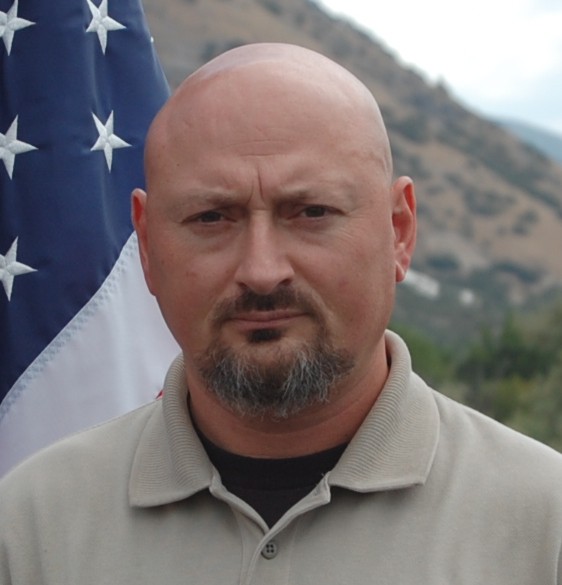
For more information about training courses offered by John Krupa, visit his website at www.TeamSpartan.com
The views and opinions expressed in this article are those of the author and do not necessarily reflect the official position of Action Target as a company.







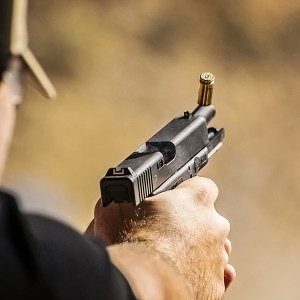
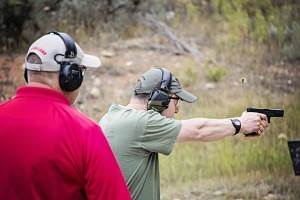
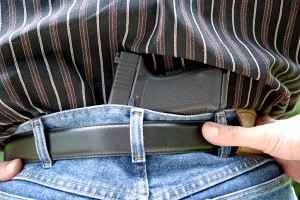 By John Krupa III.
By John Krupa III.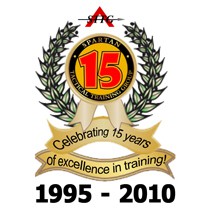 By John Krupa III of Spartan Tactical Training Group and Action Target Academy
By John Krupa III of Spartan Tactical Training Group and Action Target Academy